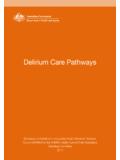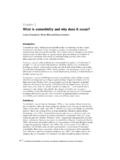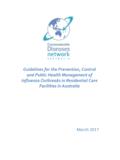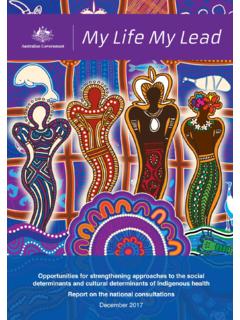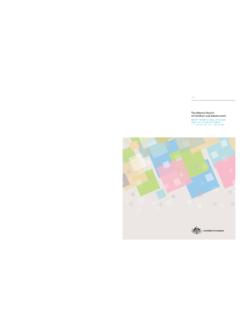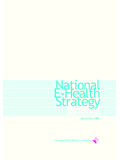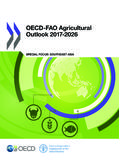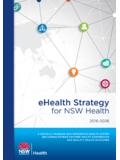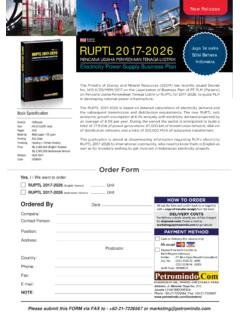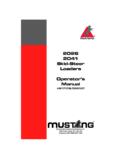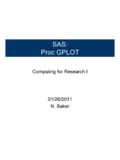Transcription of National Drug Strategy 2017-2026 - Department of …
1 National DRUGSTRATEGY2017 2026A National framework for building safe, healthy and resilient Australian communities through preventing and minimising alcohol, tobacco and other drug related health, social and economic harms among individuals, families and drug Strategy 2017 2026 Commonwealth of Australia as represented by the Department of Health 2017 National drug Strategy 2017-2026 Publications Number: 11814 Creative Commons Licence This publication is licensed under the Creative Commons Attribution International Public License available from ( Licence ). You must read and understand the Licence before using any material from this publication.
2 RestrictionsThe Licence may not give you all the permissions necessary for your intended use. For example, other rights (such as publicity, privacy and moral rights) may limit how you use the material found in this publication. The Licence does not cover, and there is no permission given for, use of any of the following material found in this publication: the Commonwealth Coat of Arms. (by way of information, the terms under which the Coat of Arms may be used can be found at ); any logos and trademarks; any photographs and images; any signatures; and any material belonging to third limiting your obligations under the Licence, the Department of Health requests that you attribute this publication in your work.
3 Any reasonable form of words may be used provided that you: include a reference to this publication and where, practicable, the relevant page numbers; make it clear that you have permission to use the material under the Creative Commons Attribution International Public License; make it clear whether or not you have changed the material used from this publication; include a copyright notice in relation to the material used. In the case of no change to the material, the words Commonwealth of Australia ( Department of Health) 2017 may be used. In the case where the material has been changed or adapted, the words: Based on Commonwealth of Australia ( Department of Health) material may be used; and do not suggest that the Department of Health endorses you or your use of the regarding any other use of this publication should be addressed to the Branch Manager, Communication Branch, Department of Health, GPO Box 9848, Canberra ACT 2601, or via e-mail to CONTENTSThe National drug Strategy at a glance.
4 1 Introduction ..3 Policy Context ..6 Underpinning Principles ..15 Priority Areas of Focus ..17 Governance ..35 Monitoring and Reporting Progress ..40 Appendix Examples of evidence-based and practice-informed approaches to harm minimisation ..43 1 National drug Strategy 2017 2026 THE National drug Strategy 2017 2026 AT A GLANCEP urposeTo provide a National framework which identifies National priorities relating to alcohol, tobacco and other drugs, guides action by governments in partnership with service providers and the community, and outlines a National commitment to harm minimisation through balanced adoption of effective demand, supply and harm reduction strategies.
5 Aim To build safe, healthy and resilient Australian communities through preventing and minimising alcohol, tobacco and other drug -related health, social, cultural and economic harms among individuals, families and Balanced Approach Across the Three Pillars of Harm MinimisationDemand ReductionPreventing the uptake and/or delaying the onset of use of alcohol, tobacco and other drugs; reducing the misuse of alcohol, tobacco and other drugs in the community; and supporting people to recover from dependence through evidence-informed ReductionPreventing, stopping, disruptingor otherwise reducing theproduction and supply of illegal drugs; and controlling,managing and/or regulating the availability of legal ReductionReducing the adverse health,social and economicconsequences of the use of drugs, for the user, their families and the wider Underpinning Strategic Principles Partnerships Coordination and Collaboration National direction, jurisdictional implementation Evidence-informed responsesPriority Actions Enhance access to evidence- informed, effective and affordable treatment Develop and share data and research.
6 Measure performance and outcomes Develop new and innovative responses to prevent uptake, delay first use and reduce alcohol, tobacco and other drug problems Increase participatory processes Reduce adverse consequences Restrict and/or regulate availability Improve National coordination Priority Populations Aboriginal and Torres Strait Islander people People with mental health conditions Young people Older people People in contact with the criminal justice system Culturally and linguistically diverse populations People identifying as lesbian, gay, bisexual, transgender, and/or intersexPriority Substances Methamphetamines and other stimulants Alcohol Tobacco Cannabis Non-medical use of pharmaceuticals Opioids New psychoactive substances Measuring SuccessAssess progress by reviewing and reporting against the following headline indicators, using existing published and well-established data sources: average age of uptake of drugs, by drug type; recent use of any drug (people living in households); arrestees illicit drug use in the month before committing an offence; victims of drug related incidents; and drug -related burden of disease (including mortality).
7 Reporting will also consider new and emerging data Reporting will also consider new and emerging data sources, research and evaluation findings both nationally and internationally to ensure progress is monitored according to best available evidence. 3 National drug Strategy 2017 2026 INTRODUCTIONA National framework for building safe, healthy and resilient Australian communities through preventing and minimising alcohol, tobacco and other drug -related health, social and economic harms among individuals, families and its first iteration in 1985, Australia s National drug Strategy has been underpinned by an objective of minimising the harms associated with alcohol, tobacco, illicit drug and pharmaceutical drug use.
8 Throughout the Strategy , the term other drugs is used in reference to illicit drugs and pharmaceutical drugs. The concept of harm minimisation is again central to this, the seventh iteration of the National drug Strategy (the Strategy ). This consistent approach to the National drug policy framework has earned high international regard for its progressive, balanced and comprehensive approach and has made considerable achievements. However, alcohol, tobacco and other drug problems continue to impact individuals, families and communities through negative health, legal, social and economic , for the first time, the Strategy will have a ten year lifespan, reflecting Australia s consistent and ongoing approach to National alcohol, tobacco and other drug policy.
9 The Strategy provides a National framework for action that is able to accommodate new and emerging alcohol, tobacco and other drug issues when they arise, and provides a guide for jurisdictions in developing their individual responses to local alcohol, tobacco and other drug issues. It is expected that each jurisdiction will develop their own accompanying Strategy action plan which details the local priorities and activities to be progressed during the Strategy ongoing cooperation between the law enforcement and health sectors is a key success of the previous National drug Strategy . In addition to providing a National framework to guide coordinated action to minimise the harms to all from alcohol, tobacco and other drugs, this iteration saw the development of a number of sub-strategies to provide direction and context for specific issues.
10 4 During the period of the National drug Strategy 2010-2015, evidence-informed demand, supply and harm reduction strategies yielded positive results. Some examples include: In 2014-15, police reported a record 105,862 National illicit drug seizures, and issued 11,809 diversions for cannabis-related offences1; The 2014 survey of Australian secondary students shows that the prevalence of smoking in the past month, past week and on at least three of the past seven days among 12- to 15-year-olds was the lowest it has been since 19842; and The National drug Strategy Household Survey reported a decline in the proportion of people exceeding lifetime risk guidelines for consuming alcohol from in 2010 to in 20163, and declines in the use of some illicit drugs between 2010 and 2016, including methamphetamine and ecstasy4 and a decrease in the proportion of people injecting drugs during this do we need a National drug Strategy ?
